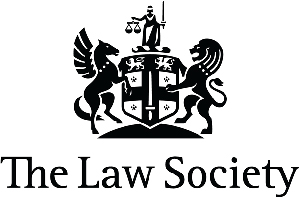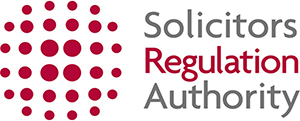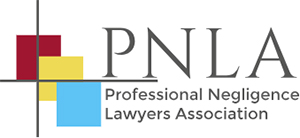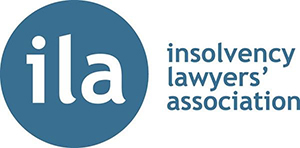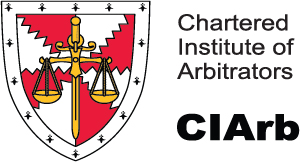Professional Negligence Claims have substantially increased
The Solicitors Regulation Authority (SRA), the regulator for solicitors in England & Wales, has provided some statistics for professional negligence claims data for the 10-year period between 2004 to 2014 from professional indemnity insurers currently active in the market such as Travelers Insurance Co Ltd, Zurich Insurance Ltd, AmTrust Europe and Inter Hannover.
It is interesting to note and not surprising that negligence claims against conveyancers and property professionals represent a disproportionate level of professional negligence claims.
Professional negligence saw a substantial rise in 2021, up 289% on the previous year. Solicitors, Barristers, and Conveyancers in particular were on the receiving end of a barrage of claims, with a 48% increase in actions against solicitors and barristers. This will only increase further following the Covid-19 pandemic and lawyers being able to work from home.
What do the statistics tell us about Professional Negligence Claims?
Insurers have paid out almost £2 billion to victims of professional negligence claims in the period between 2004 to 2014; this amount will only increase following Covid-19 and remote working becoming the norm. There were around 142,000 professional negligence claims. It is also to note that 1 in 5 claims resulted in indemnity payment and 98% of all claims where an indemnity payment was made were settled for less than £580,000. The highest claim pay-outs are claims for professional negligence in:
- Commercial Conveyancing – where the maximum payment was £6,367,000. The average pay outs were £139,000 and the median pay out was £37,000. The total value of the professional negligence claims for commercial conveyancing was £206,007,000.
- Residential Conveyancing – where the maximum pay out was £5,896,000. The average claim pay out was £57,000 and the median value was £19,000. The total value of the professional negligence claims for residential conveyancing was £393,911,000.
- Litigation – where the maximum pay out from the insurers was £2,571,000. The average claim pay out was £49,000 and the median pay out only £9,000. The total claims for the 10-year period between 2004 to 2014 was £94,378,000.
It should be noted that 50% or £770 million of value of indemnity payments result from a failure in conveyancing work.
Examples of Professional Negligence Claims against Conveyancers, Property Surveyors and Valuers
Common examples of professional negligence claims against Surveyors and Valuers include:
- Failure to carry out searches or enquiries
- Failure to advise following search results
- Failure to register purchase or lease
- Acting in a conflict of interest
- Failure to advise on missing items – planning permission
- Failing to raise requisitions on title
- Failing to register legal charge or mortgage
- Drafting incorrect provisions in contract or Deeds
- Failing to obtain consent on change of use
- Failing to provide an accurate surveyor inspection report: for example, a failure to discover defects like dry rot, woodworm, a leak, subsidence issues, signs of Japanese knotweed affecting the structure of the property
- Failure to correctly advise on the stamp duty tax due (including any failures to make enquiries of any properties owned abroad)
- Failure to claim relief for Multiple Dwelling Relief (MDR)
- Failures or errors in drafting the contracts or lease documentation
- Missing the stamp duty holiday
- Incorrect surveyor inspection report: which was relied upon to complete a purchase and subsequently causing you financial loss in order to remedy defects would should have been identified in the report
- Incorrect/negligent valuations: if a valuation report transpires to be over-valued and you have purchased the property at above the market rate, then you may have a claim for damages for the difference against the surveyor.
- Failing to identify defects: such as burdens affecting the property such as rights of way or restrictive covenants not being investigated or warned about.
- Not checking charges and restrictions on leasehold homes
- Failing to advise on boundary issues
- Failing to check ‘good title’
- Failing to identify hazardous materials
- Failing to provide adequate and accurate reports
- Failing to report on issues such as subsidence, damp etc
If you have experienced any of these examples of professional negligence, please give us a call as you may have a claim for professional negligence.
Importance of a well-kept file and attendance notes
It is important that you keep and retain any evidence that you have to support your professional negligence claim. This will make any professional negligence claim difficult for the insurer and professional to defend it; it will assist in your claim and likely assist in the early settlement of your claim at an optimal level. The best claims are ones where there is extensive documentation and the client has kept a record of the interactions and negligent advice provided by the professional.
The professional’s duty to notify the insurer immediately of a circumstance or Professional Negligence Claim
The professional must notify the insurer immediately after a claim is first made and provide the insurer with details of the claim and case file. A claim is defined as “a demand for, or an assertion of a right to civil compensation or civil damages or an intimation of an intention to seek such compensation or damages.”
It will be a breach of their insurance policy if the professional fails to notify the insurer immediately however in our experience there are some professionals that do not notify the insurer straight away and seek to deal with it in-house. The insurer will then instruct one of its panel solicitors to defend the claim and/or seek to resolve matters. We have extensive expertise and experience in optimising the amount that we recover for our clients from negligence professionals; our lawyers are described as amongst the “best lawyers in the country” and have a 98% success rate in settling professional negligence claims.
The professional must also notify its insurer immediately after it first becomes aware of a circumstance. A Circumstance is defined as “an act, omission, occurrence, fact or matter which may give rise to a claim in respect of civil liability.” Again, a failure by the professional to notify its insurer of a circumstance will be a breach of its professional indemnity insurance and the insurer, in a worst-case scenario, may not agree to fund and payout under the claim; the professional will then be liable.
Free Consultation with Expert Professional Negligence Lawyers with 98% Success Rate
Professional negligence claims have increased significantly over the last few years and the pressures on solicitors and barristers continue to increase. The professional indemnity market is very difficult with most insurers now insisting on guarantees to be provided by partners or refusing to provide cover. We expect that professional negligence claims will only increase over the next 3-5 years.
If you have a professional negligence claim or are concerned about the handling of your legal case, please contact us for a Free Consultation at 0207 459 4037 to discuss the merits of your professional negligence claim and the litigation funding options for you. You can also schedule a Free Consultation with our lawyers using the booking form below.
We will offer you a bespoke litigation funding package that meets your own circumstances and needs. We will work with you to find the best funding solution for your claim. You can find some further information about our funding options here.













